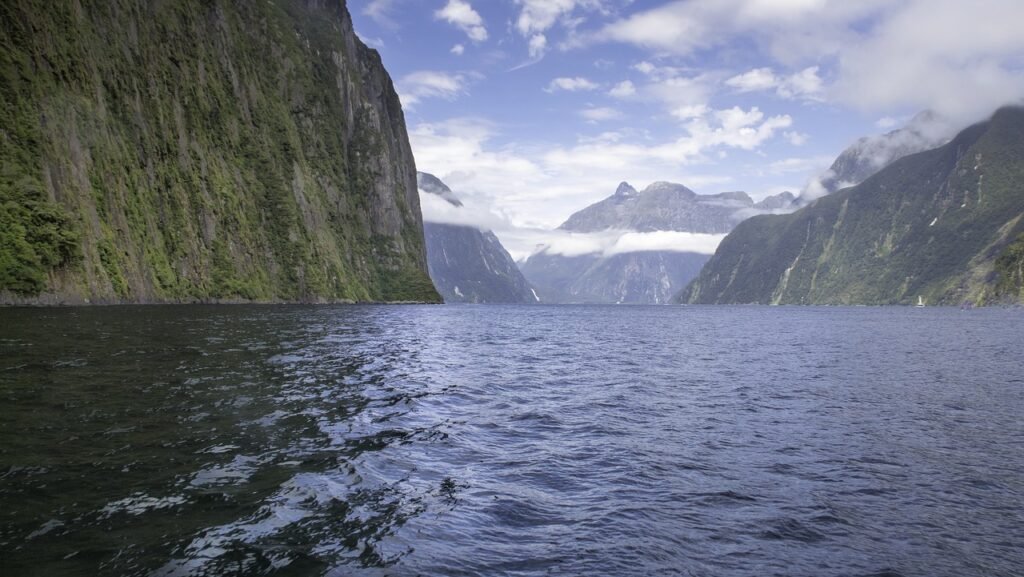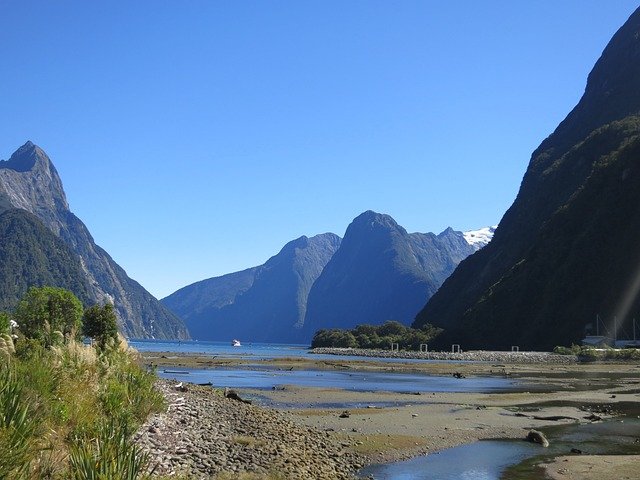Milford Track Guide: 4 day trekking adventure
Milford Sound, is a jewel in New Zealand’s Fiordland National Park, often hailed as the “Eighth Wonder of the World.”
This guide will take you through its wonders, helping you plan an unforgettable experience. By the end, you’ll be ready to pack your bags and immerse yourself in this enchanting corner of the world.
About Milford Sound
Imagine a place so breathtakingly beautiful it feels almost otherworldly—where towering waterfalls cascade from sheer cliffs, emerald waters mirror the rugged peaks, and an atmosphere so serene it touches your soul.
Nestled in the heart of Fiordland National Park on New Zealand’s South Island, Milford Sound is a fiord carved by glaciers over thousands of years.
It stretches 16 kilometers from the Tasman Sea into the rugged mountain landscape, surrounded by towering cliffs draped in lush rainforest.
Rain or shine, Milford Sound is stunning—on clear days, the peaks reflect perfectly in the still waters, while on rainy days, hundreds of temporary waterfalls appear, creating a dynamic and dramatic spectacle.
MILFORD SOUND WILDLIFE
Milford Sound is teeming with wildlife. Look out for bottlenose dolphins leaping through the waves, fur seals basking on rocks, and Fiordland crested penguins, one of the rarest penguin species in the world.
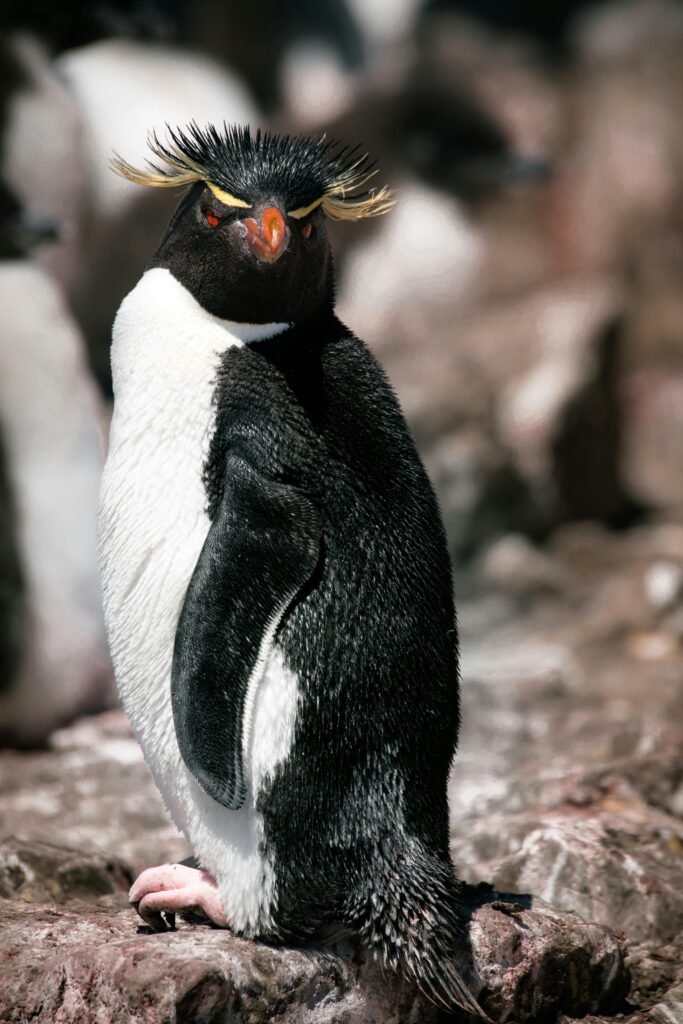
The lush forests are home to some of New Zealand’s most iconic and endangered bird species, including the kiwi and takahē.
The adventurous kea, an alpine parrot known for its curiosity, is often spotted in the area.
Milford Sound holds deep significance for the Māori people. Known as Piopiotahi in the Māori language, the name translates to “Lone Piopio,” a native bird said to have mourned the passing of the legendary hero Maui.
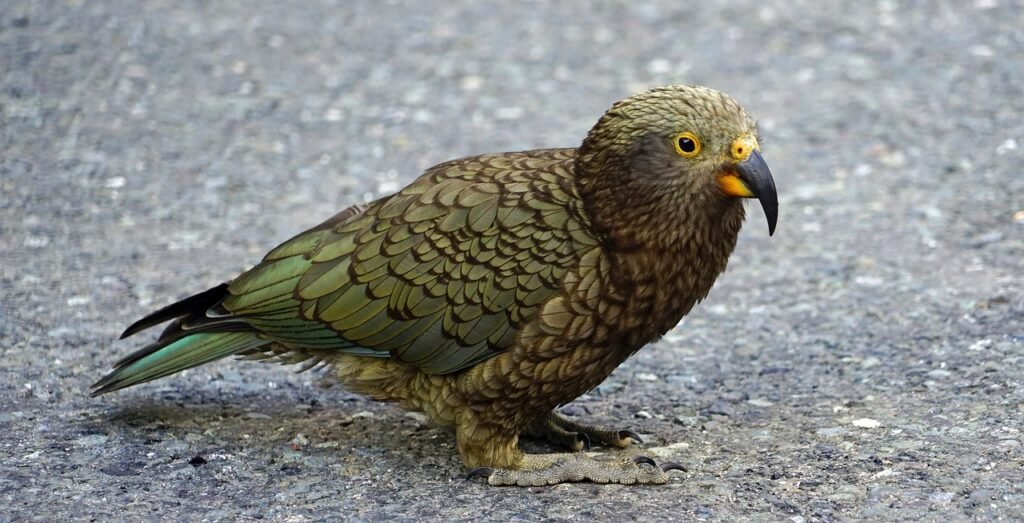
Top Landmarks in Milford Sound
Mitre Peak:
One of the most photographed peaks in New Zealand, this iconic mountain rises sharply to 1,692 meters directly from the water.
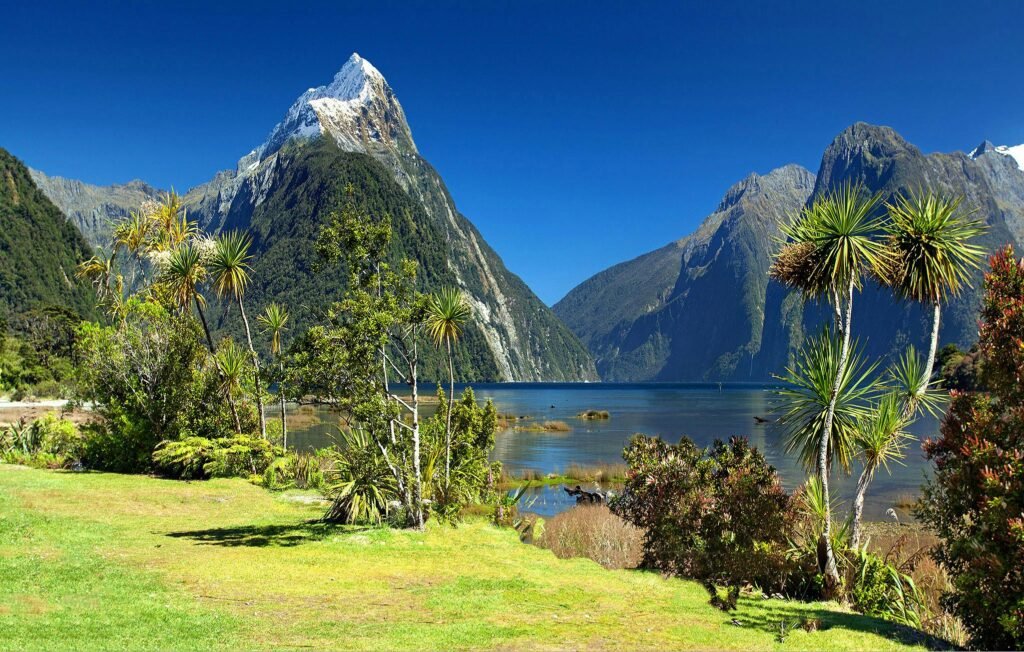
Stirling and Bowen Falls:
These majestic waterfalls are visible year-round, offering perfect spots for photography.
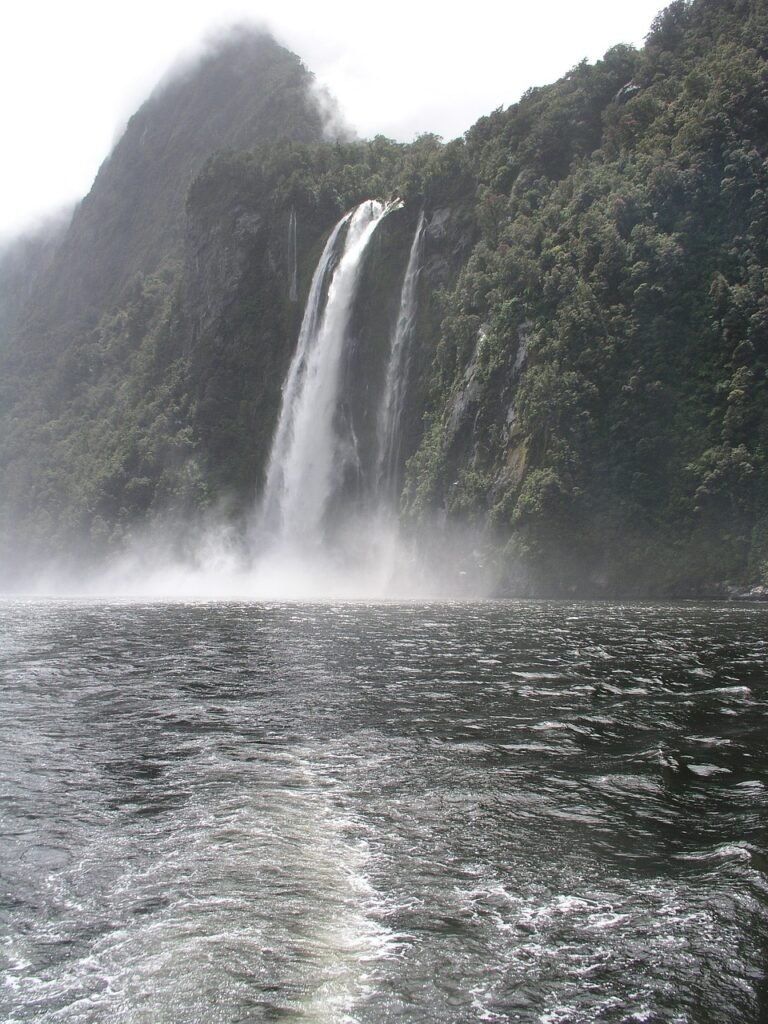
Milford Track:
Often referred to as the “finest walk in the world,” this multi-day trek takes you through lush forests, alpine passes, and alongside cascading rivers.
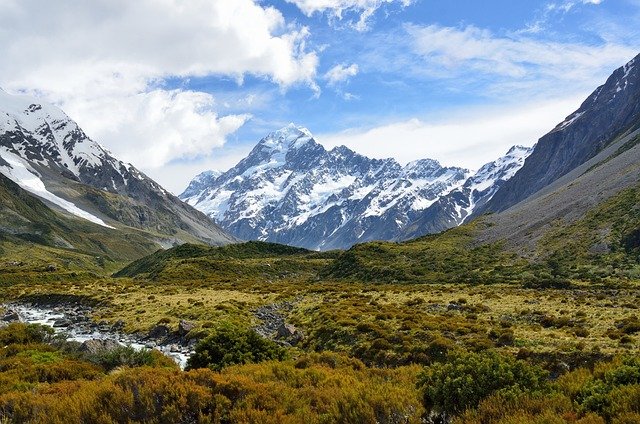
Underwater Observatory:
Located in Harrison Cove, this unique attraction allows you to view the sound’s underwater ecosystem without getting wet.
Milford Track: The finest walk in the world
Often referred to as “the finest walk in the world,” the Milford Track in New Zealand is a breathtaking journey through some of the most pristine and awe-inspiring landscapes on Earth.
The track begins at Glade Wharf and takes hikers on a four-day adventure, culminating at the iconic Milford Sound, where steep cliffs and majestic fjords create an unforgettable finale.
Along the way, trekkers will encounter dramatic landmarks such as Mackinnon Pass, the highest point of the trail, and Sutherland Falls, one of the tallest waterfalls in the world.
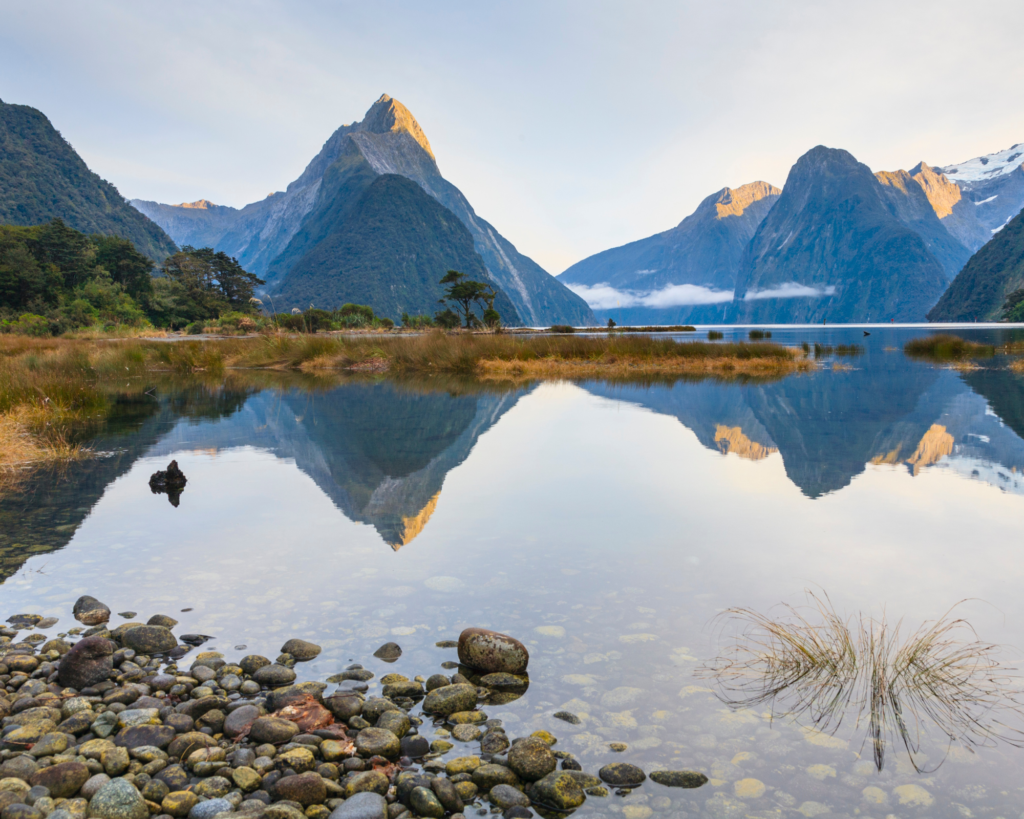
Milford Track itinerary
The hike typically takes 4 days and 3 nights to complete and is a bucket-list adventure for many outdoor enthusiasts
Duration: 4 days, 53.5 kilometers
Difficulty: Moderate
Start/Finish: Begins at Glade Wharf (Te Anau Downs) and ends at Sandfly Point in Milford Sound.
Highlights: Clinton Valley, Mackinnon Pass, Sutherland Falls (New Zealand’s highest waterfall).
Description: This world-famous trek is a bucket-list experience. Each day brings new landscapes, from beech forests to alpine vistas, culminating in a boat ride across Milford Sound.
Day-by-Day Breakdown
Day 1: Glade Wharf to Clinton Hut (5 km/3.1 miles)
Duration: 1-1.5 hours
Terrain: Easy, flat, well-maintained track
Highlights: The journey begins with a scenic boat ride from Te Anau Downs to Glade Wharf. The views of Lake Te Anau are a stunning start to the trek.
A short, leisurely walk takes you along the Clinton River, surrounded by native beech forests.
The trail offers glimpses of the moss-covered forest floor, ferns, and birdlife such as fantails and robins.
Overnight at Clinton Hut, nestled beside the river and offering comfortable bunks and basic amenities.
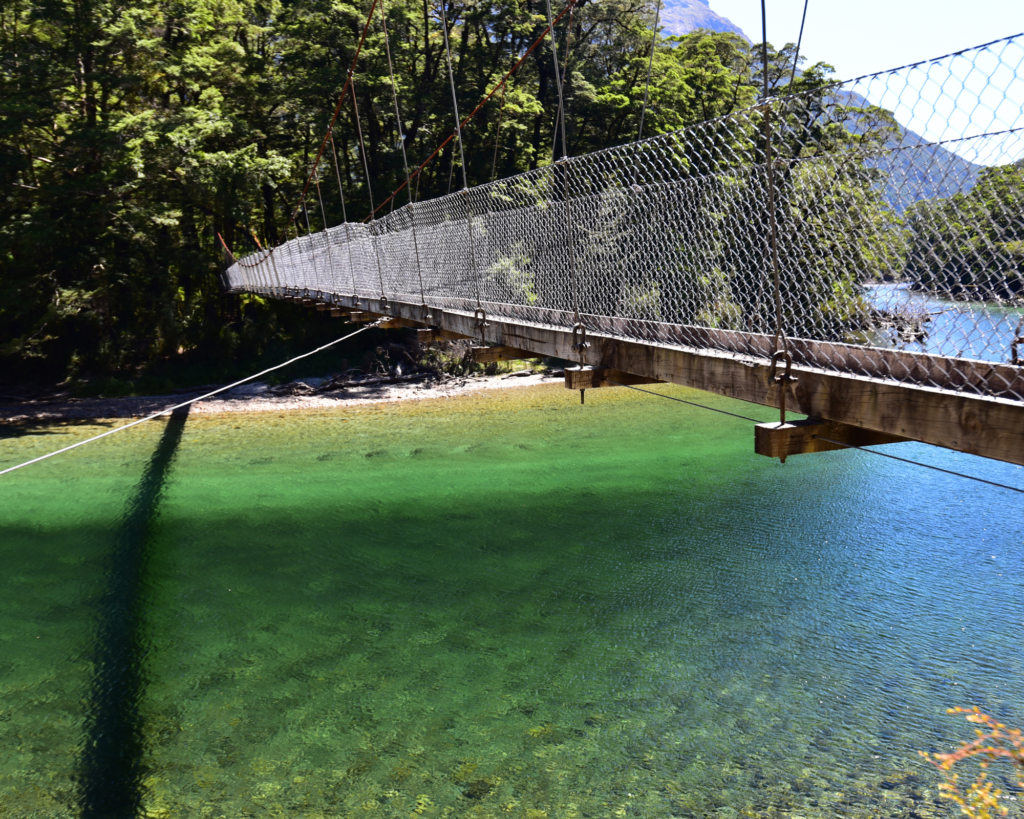
Day 2: Clinton Hut to Mintaro Hut (16.5 km/10.3 miles)
Duration: 6-7 hours
Terrain: Gradual ascent through river valleys with some boardwalks
Highlights:
The track follows the Clinton River into a stunning glacial valley flanked by sheer mountains.
Pass through wetlands and a beech forest, with towering peaks like Mt. Balloon coming into view.
Spot wildlife such as kea (alpine parrots) and perhaps even an elusive kiwi.
Marvel at the Mirror Lakes, which perfectly reflect the surrounding mountains on calm days.
Mintaro Hut lies at the base of Mackinnon Pass, offering breathtaking views of the surrounding alpine scenery.
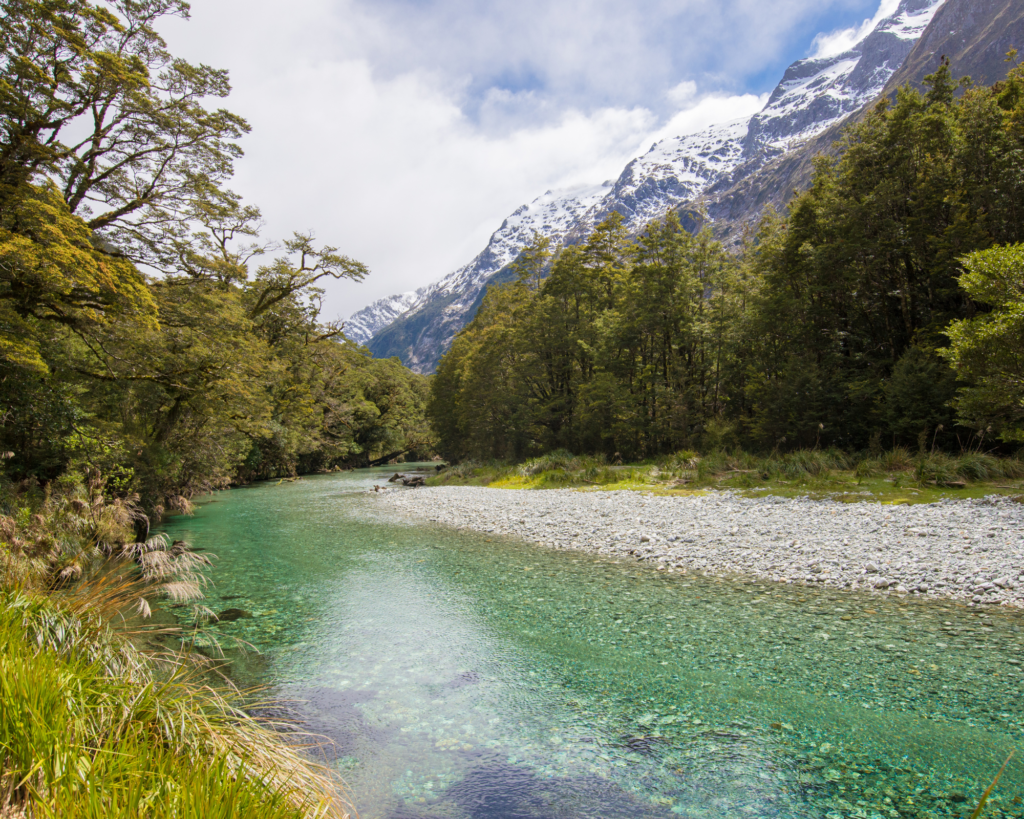
Day 3: Mintaro Hut to Dumpling Hut (14 km/8.7 miles)
Duration: 6-8 hours
Terrain: Steep ascent and descent over Mackinnon Pass
Highlights: This is the most challenging and rewarding day of the trek. A steep climb takes you to Mackinnon Pass (1,154 m), the highest point on the track.
From the pass, enjoy panoramic views of the Arthur Valley and surrounding peaks. This is a great spot for photos and reflection.
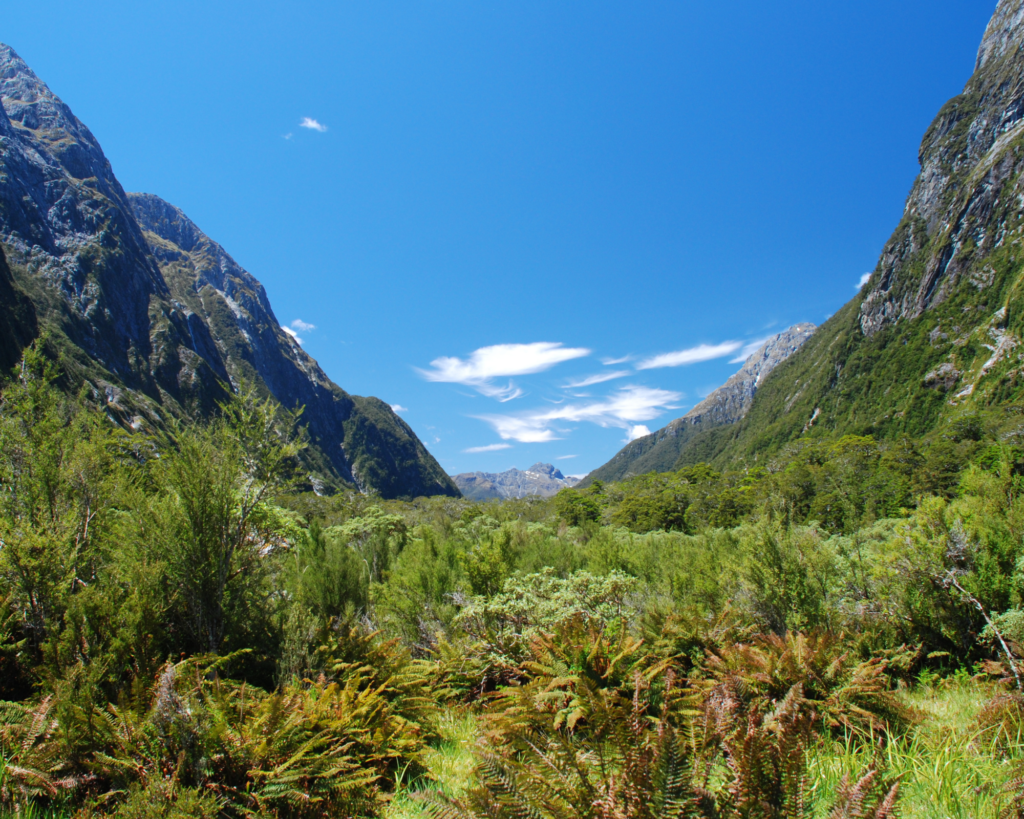
Descend past the 580-meter-high Sutherland Falls, one of the tallest waterfalls in New Zealand. A short side trip takes you to the base of the falls for an unforgettable experience.
Finish the day at Dumpling Hut, located in the lush Arthur Valley.
Day 4: Dumpling Hut to Sandfly Point (18 km/11.2 miles)
Duration: 6-7 hours
Terrain: Mostly flat with some undulating sections
Highlights:
The final day takes you through the Arthur Valley, following the Arthur River and passing cascading waterfalls and crystal-clear pools. The Giant Gate Falls, a spectacular waterfall near the end of the track, is a must-see.
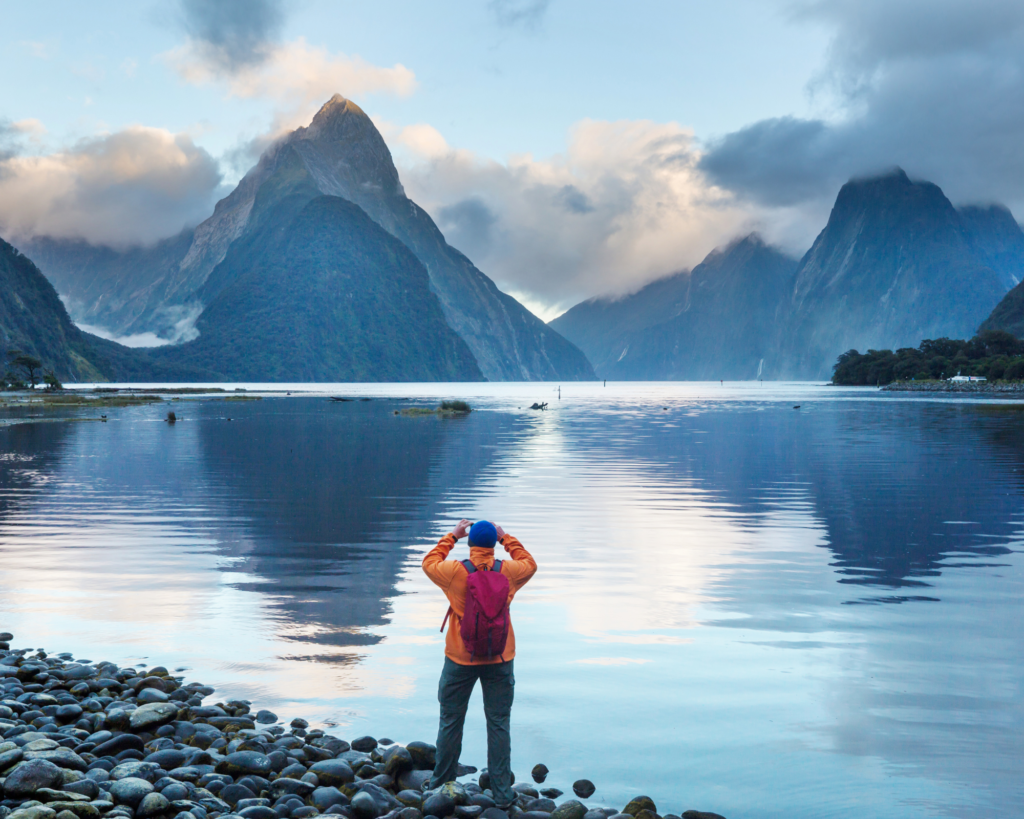
The trail concludes at Sandfly Point, where a short boat ride transports you to Milford Sound.
At Milford Sound, marvel at Mitre Peak, towering fiords, and the serene waters of this UNESCO World Heritage Site.
Getting to Milford Sound
By Car
From Queenstown: A 4-hour scenic drive with stops like Mirror Lakes, Eglinton Valley, and Homer Tunnel.
Important Tip: Ensure your vehicle is fueled, as there are no petrol stations between Te Anau and Milford Sound.
By Bus
Tour operators offer eco-friendly buses with commentary and photo stops.
By Plane
Scenic flights from Queenstown or Te Anau provide unparalleled views of the fiords and surrounding mountains.
Getting to Te Anau
Te Anau is the gateway to the Milford Sound Track and is located approximately 2 hours by car from Queenstown. Here are some options for reaching Te Anau:
By Car:
Rent a car in Queenstown or Invercargill and enjoy a scenic drive along State Highway 6 and 94.
By Bus:
Several operators, such as InterCity and Tracknet, offer daily services from Queenstown, Invercargill, or Dunedin to Te Anau.
By Air:
While there are no commercial flights to Te Anau, you can fly into Queenstown or Invercargill and connect by road or bus.
Once in Te Anau, most trekkers take a boat from Te Anau Downs to Glade Wharf, the starting point of the Milford Sound Track.
THINGS TO DO IN MILFORD SOUND BEYOND HIKING
Milford Sound offers a wide array of fantastic activities to enjoy. Some of the highlights include
|
Activity |
Description |
|
Kayaking |
Paddle through the calm waters for a more intimate experience with nature. |
|
Helicopter Tours |
Fly over Milford Sound and the Southern Alps for jaw-dropping views. |
|
Wildlife Spotting |
Join a guided nature tour to learn about the unique flora and fauna. |
|
Photography |
Every corner of Milford Sound offers a postcard-perfect shot. |
KNOW BEFORE YOU GO
There is important Information from the Department of Conservation (DOC) that you should know before your trip.
Cellphone Coverage:
There is no cellphone coverage.
Track Suitability
The track is not suitable for all walkers. It is not recommended for children under the age of 10 due to the exposed mountainous environment and often adverse weather conditions.
Weather Conditions:
Weather conditions can change quickly in any season. Fiordland National Park experiences very high rainfall (up to 9000 mm per year). Be prepared for all conditions.
Travel insurance:
Travel insurance is highly recommended.
Avalanche Risk:
The risk of avalanche can extend into December.
River Safety:
Stay safe when crossing rivers. Do not cross if the river is flooded, you cannot find safe entry and exit points or are unsure if it’s safe. Turn back or wait for the river to drop. If in doubt, stay out.
You can find more information in Milford Track: Fiordland National Park, Fiordland region.
Important Tips for Milford Track
Accommodation and facilities in the area
Due to its popularity, it’s essential to book huts and transport well in advance, especially for the peak season. Bookings can be made through the Department of Conservation (DOC) website.
In Te Anau
A variety of motels, hotels, and lodges cater to all budgets. Ideal for those seeking pre- or post-trek comfort.
On the Track
DOC-managed huts with basic facilities (bunks, cooking areas, toilets), see Milford Track: Fiordland National Park, Fiordland region.
These huts must be booked in advance, especially during the Great Walks season (October to April)
Guided tours offer additional amenities like meals and hot showers.
In Milford Sound
The only accommodation within Milford Sound, is Milford Lodge, offering options from riverside chalets to dormitories.
Guided vs. Independent Hiking:
Hikers can choose between guided walks, which offer more amenities, and independent trekking. Guided walks are typically longer, spanning 5 days and 4 nights, and provide additional services.
If you plan to do this trek independently, it’s important to keep an eye on the dates to purchase park access tickets from the Department of Conservation in New Zealand. Additionally, you will need to reserve accommodation for the trek.
However, if you choose to go with an agency, they will handle these arrangements for you.
Packing Essentials
Make sure to pack these essential items in your backpack:
|
Category |
Items |
|
Clothing |
Layers for warmth (merino wool or synthetic), waterproof jacket, hiking boots. |
|
Gear |
Backpack, sleeping bag, cooking utensils, food for 4 days, and a first aid kit. |
|
Miscellaneous |
Insect repellent (for sandflies!), sunscreen, map, and a camera. |
Travel Tips and Recommendations
Best Time to Visit:
Great Walks Season: October to April for milder weather and well-maintained tracks. During this period, you can enjoy milder temperatures and clearer skies
Winter Season: May to September is more challenging due to reduced facilities and harsher conditions—recommended for experienced hikers only. The facilities are significantly reduced, and additional hazards make the route more challenging. Therefore, it is recommended only for advanced and expert trekkers.
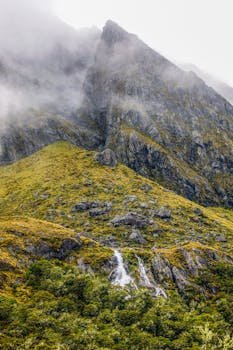
Is Milford Sound Worth It?
Absolutely! Milford Sound is a destination that transcends expectations, leaving visitors with memories to cherish for a lifetime.
Whether you explore its serene waters by kayak, hike its legendary trails, or simply soak in its beauty from a cruise deck, this fiord promises an experience like no other. Start planning your journey today and let the magic of Milford Sound captivate your heart. Discover more magical hiking destinations.
